If you are considering the Citroën ëC3, here are some important factors to keep in mind based on our experience driving it.
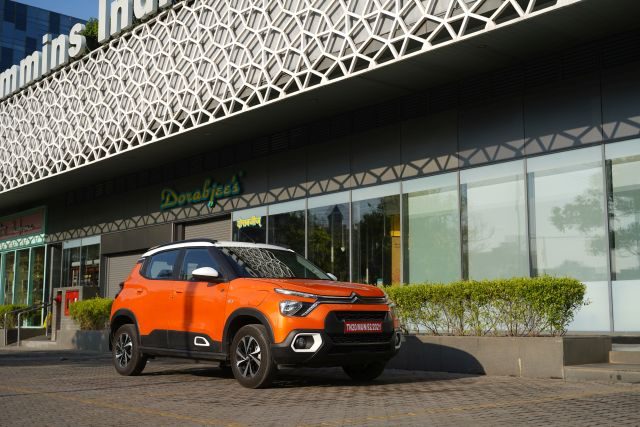
Story: Kurt Morris
Photography: Apurva Ambep
As people become increasingly aware of how their daily activities affect the environment, electric vehicles (EV) have become more and more popular in recent years. Even though they come in a range of shapes and sizes, smaller cars are typically the best application for EVs. These vehicles can go greater distances on a single charge because they often have lower power requirements due to their lightness. They are also more reasonably priced, which makes them a viable option for individuals wishing to move to EV.
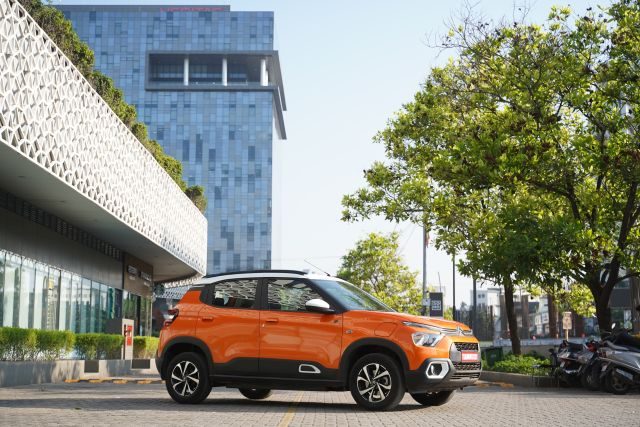
Citroën are renowned for their quirky and unorthodox design aesthetic. The brand’s design philosophy places a strong emphasis on creativity and uniqueness, with the goal of producing vehicles that stand out from the competition. The design language of Citroën contains a variety of distinctive aspects, such as unusual shapes, vivid colours, and distinctive lighting features.
The interior of the ëC3 is nearly identical to that of the C3 powered by an internal combustion engine (ICE), just like the exterior. The dual-tone console, digital instrument panel, and fabric seats with distinct colour schemes are all included. It maintains the brand identity that Citroën have established with the C3 and looks and feels just like the ICE C3, which should be advantageous in terms of normalising EV.
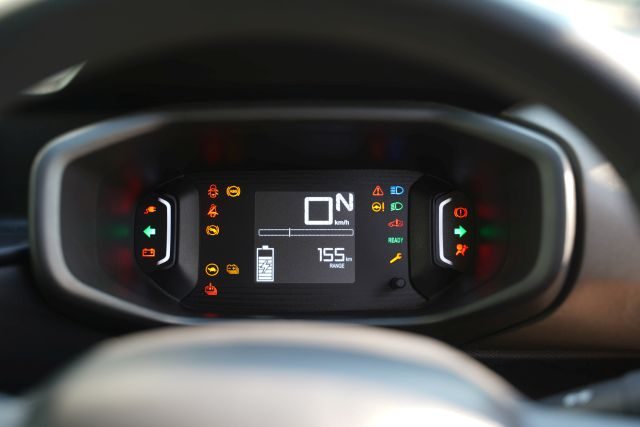
The instrument cluster is still a straightforward black-and-white, but it has been somewhat tweaked to add features such as dual trip metres and charge percentage. This top-of-the-line Pure model we drove had a 10.2-inch display with a user-friendly colourful interface. The display itself is clean and bright and there are direct routes to every function. It features a glossy surface and no tactile buttons, although it does have wireless Apple CarPlay and Android Auto.
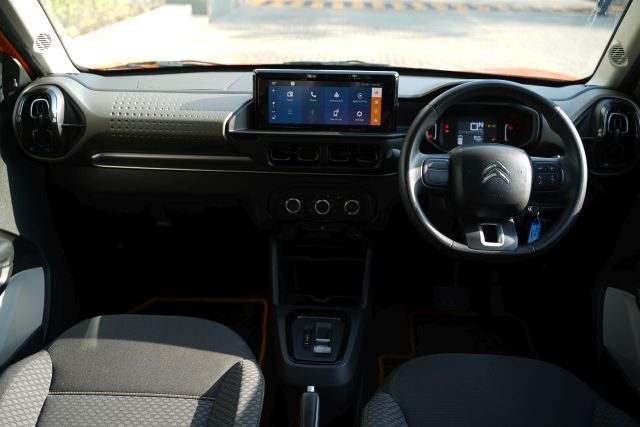
All the seats have appropriate bolstering, but the rear seat doesn’t really have enough room for three passengers. It has two charging ports in the middle and it could take some getting used to because the rear passengers’ a-c vents are located in the middle of the front seats. The second-row floor is higher due to the battery pack underneath, which reduces under-thigh support. The second row is similarly minimal, without an arm-rest and a 60:40 split-folding feature.
With a 29.2-kWh lithium-ion battery pack, the Citroën ëC3 has a range of 320 kilometres, which is five km longer than the Tata Tiago EV’s long-range model. However, in real-world stop-and-go city traffic, it will give an anticipated mileage of 220 to 240 km. Despite having a meagre 57 hp, the motor still produces a reasonable 143 Nm of torque. The manufacturer has imposed a top speed cap of 107 km/h, which we presume has been done to get the optimal balance for maximizing its range.
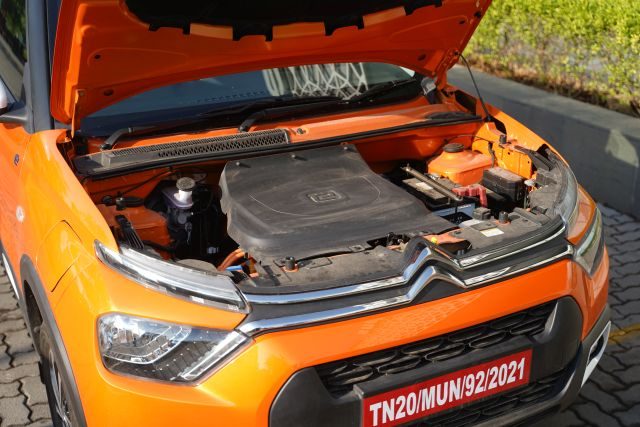
However, compared to its competitors, the ëC3 displays a less responsive reaction to throttle inputs. Its acceleration is gradual, even for an EV, and it exhibits some body-roll while manoeuvring through curves. Anyone who lives in a city will benefit from a fully automatic driving experience with eco/standard drive modes.
This car comes with a highly convenient 15-Amp plug point charger that can be put in any place and charges from 10 to 100 per cent in 10 hours and 30 minutes. It can also be charged quickly with a DC fast charger, in which case it can go from zero to 100 per cent in just 57 minutes. With the battery pack, Citroën offer a seven-year, 140,000-km warranty, which will significantly ease ownership.
Citroën are well-known for their suspension set-ups and the company has a long history of creating benchmark suspension systems. The car’s electric drivetrain also provides a refined, quiet, and vibration-free driving experience. The ëC3 feels more planted and steady in turns than the petrol-powered Citroen C3, which is a noticeable improvement. The ëC3 is more sure-footed around corners because of the additional weight—which is over 300 kg more than the petrol car—and the low centre of gravity of the battery. The ëC3 is a great option for city driving because of its suspension system, which is meant to smooth out potholes and other road imperfections.
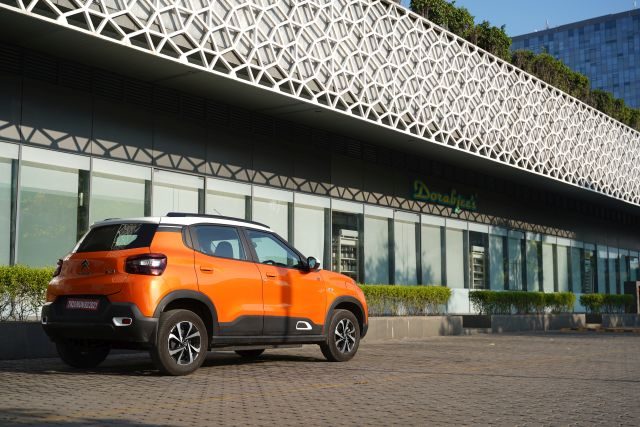
During our brief driving experience, the Citroën ëC3 felt like an ideal city car. It has got enough on its side, such as a fun quirky style, a big cabin, useable cargo capacity, and let’s not forget the 10-inch touchscreen display. The all-electric drivetrain also performs admirably.
Prices for the top-spec ëC3 models range from Rs 11.50 lakh to Rs 12.43 lakh. The Tata Tiago EV is the only product now in the market that competes with the ëC3.
Also read: Kia EV6 – Unleashing Electrifying Power


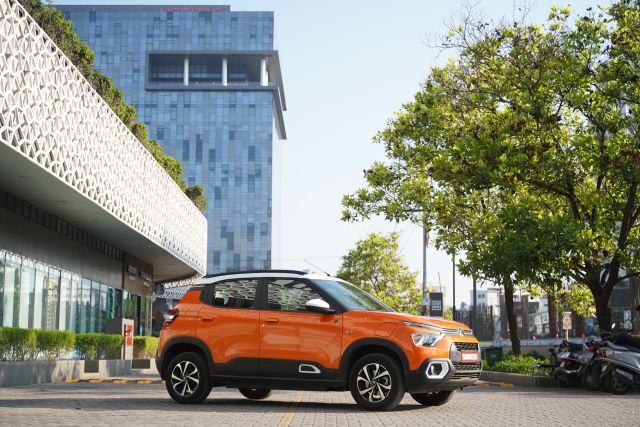


















Leave a Reply